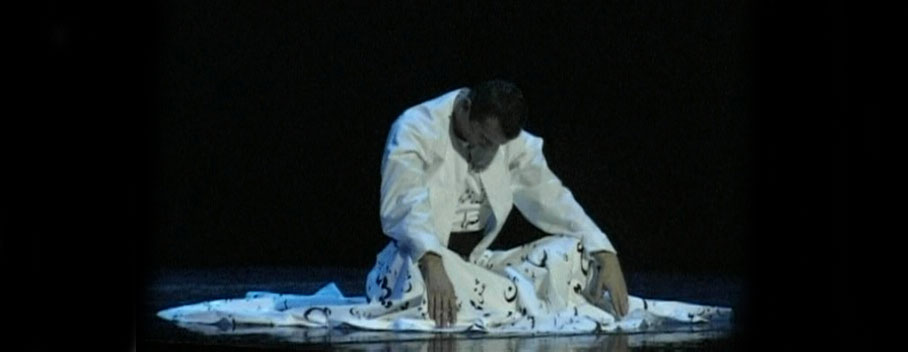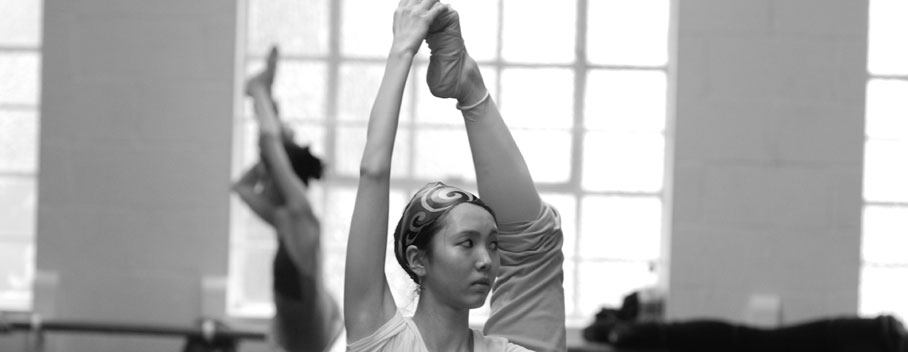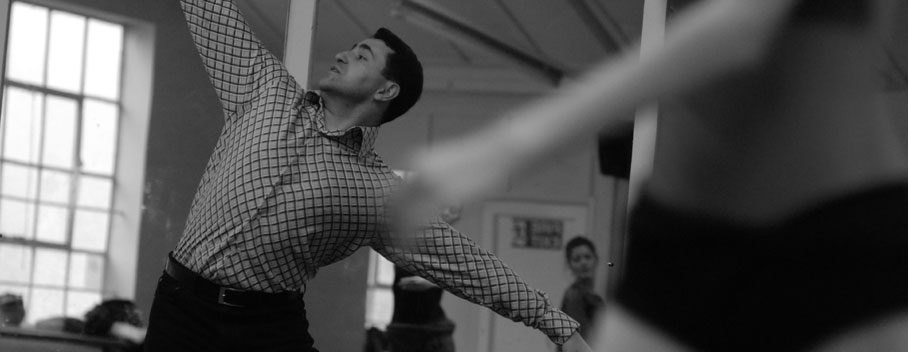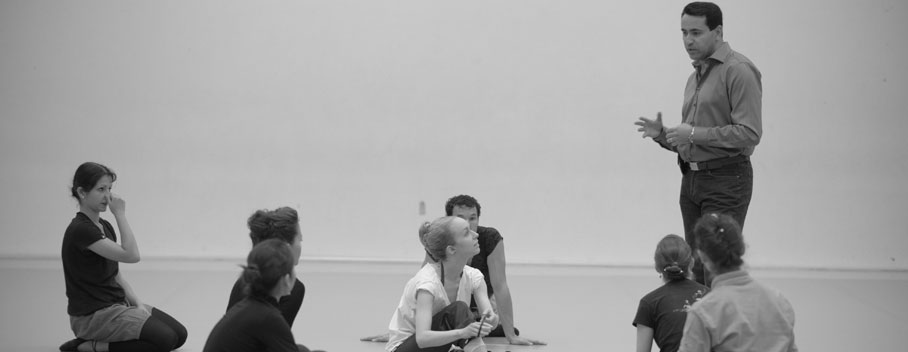The list contains present as well as previous collaborators, participants and employees since the foundation of Les Ballets Persans in 2002
Nima Kiann
Founder,
General and Artistic Director,
Principal Choreographer
Other Board Members:
Eve-Marie Nordmark
Ivar Nordmark
Massoud Ahmadi
Touraj Jamshidi
Ali Mirfattah
Barbro Bise
Birgit Lundin
Mari Jankovski
Erik Nordmark
Youbert Rezvani
Javaneh Sorouri
Johan Stjernholm
Tommy Widerberg
Rafiga Akhundova
Maksud Mamedov
Nima Kiann
Gabriala Gutarra
Aizada Akmatova
Marc du Bouaÿs
Dominique Franchetti
Istvan Kisch
Victor Valcu
Asel Aidarova
Aidai Akylbekova
Aizada Akmatova
Iasmina Nasyrova
Eles Arykov
Azuka Inoue
Talant Bekishov
Farangis Kazymova
Mohammad Azimova
Alexandr Bakhman
Omedjoni Sangalizoda
Birgit Mühlram
Carolina Ureta
Olga Kuzmina
Julia Davies
Angelina Allen
Hazmik Amirian-Bennet
Gwendolyn Berwick
Billyana Angelova Parvulova
Luciana Reolon
Adolfo Chávez
Ledian Agallijaj
Alexey Grigoriev
David Hovhannisyan
Alexander Pereda
Moe Shiraha
Jean-Pierre George
Aleksandr Kuchkin
Kayoko Yoshihashi
Farangis Hakimova
Parvina Tashmohamadova
Manuchehr Mohamadzoda
Iskandar Rajabov
Katie E Timothy
Ela Ray Markstein
Tiffany Mayers
Danielle King
Claudia Leroy
Karla Beltrán
Robina Acosta
Zsófia Tóth
Sherene Melania
Nina Victoria Gomez
Georgina Hagerty
Hanna Hagberg
Catherine Harley
Taline Manoukian
Nancy Marks
Kanae Otava
Laura Otero
Marija Shevchenko
Dayse Tarakdian
Alexandra Willemin
Viridiana Sanchez
Katharine Yip Hoi Lam
Charles Pashby-Taylor
Ricardo Domingo
Sayat Asatryan
Elvis Nalbani
Nguyen Ngoc Anh
Jitti Chompee
Alexander Dolgikh
Ricardo Daniel Proietto
Christopher Schmidt
Karl Hagström
Jardel De Sousa
Jevgeni Unofrienko
Laura Gallotta
Giulia Fabrocile
Mario Taghadossi
Alexander Rahbari
Akshin Alizadeh
Hamid Motebassem
Hossein Alizadeh
Hossein Behroozinia
Kara Karaev
Parviz Meshkatian
Saeed Farajpoori
Peyman Soltani
Babak Saeedi
Faraj Karaev
Mahmoud Farshchian
Jamal
Nasser Ovissi
Tahir Tairov
Javad Jafari
Farima karimi
Mahsa Eshghinejad
Mahdi Memarpouri
Mirlan Nurhaliev
Majid M. Fard
Jaleh Nourazar
Shabnam Nourazar
Mahnaz Emadi
Radoslav Erovic
Oglacheno Costume Production Studio
Bitubi Dress Production
Sweing, alterations & design copy:
Shahla Dorriz
Tommy Simonsson
Reza Javadi
Pourang Javaheri
Bahman Karimi
Rahim Karimi
Ramin Ray
Amir Rezaee
Peter Lear
Babak Rajabi
Mahdi Zahedi
Maryam Afshar
Shahriar Jariani
Djalal Mirmohaddes
Marco Armani
Swedish National Office for Cultural Affairs -
Statens Kulturråd
County council of Stockholm - Kulturförvaltningen
AMI - Sweden
City of Solna
City of Uppsala
Cultural Administration of the City of Stockholm - Kulturnämnden
Japan America Theatre
Toos Foundation
Ministry of Culture and Fine Arts - Mexico
Bund iranischer Unternehmer - Germany

Born in 1948 in Tehran - Iran, Alexander (Ali) Rahbari was trained in Vienna as a pupil of Gottfried von Einem, Hans Swarowsky and Karl ?sterreicher. On his return to Iran, only 24 years old, he was appointed director of the Teheran Conservatory of Music and took a leading position in the cultural development of his country.
Early in his conducting career Rahbari was the recipient of several major awards. In 1977 he won the prestigious Gold Medal at the Concours International de Jeunes Chefs D’Orchestre (The International Contest of Young Conductors) in Besan?on, France following a Silver Medal at the Geneva Conductor’s Competition.
Noticed by the legendary Herbert von Karajan, Rahbari was invited by him to conduct the Berlin Philharmonic Orchestra. After this triumphal debut with the orchestra, further engagements followed in 1980, 1982 and 1984. Karajan also paid him the enormous compliment of asking Rahbari to be his assistant at the Salzburg Easter Festival in 1980.
From this auspicious start, Rahbari's career has blossomed and to date he has conducted more than 120 orchestras around the world working in most renowned opera houses, national and international scenes such as Orchestre de la Suisse Romande, Orchestre National de France, Czech Philharmonic, Leipzig Gewandhaus Orchestra, S?chsische Staatskapelle Dresden, NHK Tokyo, Rotterdam Philharmonic, Stockholm Philharmonic, Zürich Tonhalle Orchestra, The Berlin Symphony Orchestra, Orchestra Sinfonica Siciliana, Barcelona City Orchestra, Prague Symphony Orchestra, New Zealand Symphony Orchestra, and the English National Opera.
In 1985, Alexander Rahbari was appointed as the Czech Philharmonic’s Permanent Guest Conductor. His achievements brought him the prestigious award of Dvorak Medal for his outstanding work with the Czech Philharmonic.
Also from 1985 Rahbari became Principal Guest Conductor with the Belgian Radio and Television Orchestra, Brussels - the "BRTN" - and served as Chief Music Director from 1988 until 1996. It was during his time with the orchestra that he became well known for his recordings of the standard orchestral repertoire together with operas, contemporary music and choral works and in 1994 he was honoured with the Fuga Trophy by the Belgian Composers' Association for his outstanding achievements with the orchestra.
His recordings on Compact Disc alone number more than 150 and some of them were recorded by DISCOVER, NAXOS, and POLYGRAM. Rahbari's recordings of Verdi's and Puccini's operas have brought him international acclaim and recognition and as Chief Music Director of Koch Discover International (which he founded in 1992) he has discovered many young soloists and ensembles, helping them to make recordings and promoting them on the international scene.
From 1997 until 1999, Rahbari was appointed as principle conductor of Zagreb Philharmonic and Virtuosi di Praga. In 2000 he moved to South Spain as he was nominated as Chief Conductor and Music Director of the Malaga Symphony Orchestra and remained in the city until 2004.
Gathering 60 Iranian musicians in 1997 from Austria, Belgium, France, Germany, Holland, Spain, Sweden, Switzerland and United States in Bregenz, Rahbari founded the Persian International Philharmonic. The result has been recording of several oriental peaces as Scheherezade from Rimsky Korsakov, Violin Concert from Aram Khachaturian and Nohe Khan, composed by Rahbari at the age of 19, under the direction of Koch Discover International.
In 2003 Alexander Rahbari obtained the Reward of Honour from the City of Malaga for Outstanding Artistic Achievements. The tour in Germany with the Malaga Symphony Orchestra in 2004 through Munich, Friedrichshafen, Düsseldorf, Regensburg, K?ln, Braunschweig, etc. was a complete success resulting in standing ovations and excellent reviews in the media.
In 2005, Maestro Rahbari was invited to Iran as the Permanent Conductor of Tehran Symphony Orchestra. His return and performance of Beethoven’s Ninth Symphony, after thirty years in the country, become the biggest music event of the past three decades.
Married to a violinist from Croatia, Alexander Rahbari is father of five children. Something of a new Renaissance man, he is a passionate artist and has painted portraits of several international music personalities. He is also the avid designer of his charming home outside of Vienna.

Although they started their respective professional careers separately, their paths crossed very early on – first as ballet dancers and later as choreographers. Today, Rafiga Akhundova and Maksoud Mamedov are known as the premier ballet couple of Azerbaijan.
After graduating from the Baku School of Choreography, they both received state scholarships to the famous Bolshoi Theater’s School of Choreography in Moscow. There, Rafiga Akhundova pursued her studies under the guidance of Professor Sulamiph Messerer, while Maksud Mamedov studied classical ballet under Professor Nikolay Tarasov.
In 1952 they began their careers as leading soloists of the Azerbaijan State Opera and Ballet Theater in Baku. Their unforgettable and brilliant appearances together in such ballets as Swan Lake, Giselle and Don Quixote, received international acclaim. One of the outstanding highlights of their dancing career was their performance in Seven Beauties by Kara Karaev.
On his own, Maksud Mamedov accepted several invitations to join the Bolshoi Ballet on its tours throughout the former U.S.S.R., as well as in Germany, Poland, Czechoslovakia and Japan.
By 1968, Rafiga Akhundova and Maksud Mamedov left the stage to work solely as Choreographers. The result was highly successful productions such as Shadows of Gobustan by Faraj Karaev, Caspian Ballet by Tofik Bakikhanov and Azerbaijan Suite by Rauf Hajiev. These were performed at the International Dance Festival in Paris 1969, and received a prestigious award from the Parisian Academy of Dance. The following year these works were performed in France, Monaco and Luxembourg.
In 1971 the choreographer-couple undertook a major project with the then newly established Algerian National Ballet Company. Under their direction, the first Algerian ballet ever, Three Revolutions, was produced.
During the 1970’s and 1980’s, the couple staged several works in Baku, such as Kaleidoscope by Faraj Karaev, Babek by Akshin Alizadeh, and also new choreographic versions of Tchaikovsky’s Nutcracker, Kara Karaev’s Seven Beauties and The Path of Thunder. In addition, several choreographic miniatures were staged such as Mugam with music by Nazim Aliverdibekov, which was performed worldwide by such distinguished ballet stars as Vladimir Vassiliyev, Yekaterina Maksimova, and Galina Mezentseva, among others.
During their careers, the couple has also worked as guest choreographers or ballet masters in the cities of Malm? and G?teborg in Sweden (1975), and Novosibirisk, Russia (1976), Cairo, Egypt (1979), Antwerp, Belgium (1980-81), Ankara, Izmir and Istanbul, Turkey (1991, 1994, 1998).
In 1999 Rafiga Akhundova and Maksud Mamedov established “Dance Laboratory”, an independent modern dance group, which staged its first performance in Baku the same year. Between 1990-1996, Rafiga Akhundova held the position of Chief Choreographer at the Azerbaijan State Opera and Ballet Theatre. During the period of 2000-2002 she has been the artistic leader of the Baku School of Choreography.
Rafiga Akhundova and maksud Mamedov took part in the premiere production of Les Ballets Persans in 2002. Their full concert ballets "Seven Beauties" and "Babek" were staged for the first time in Scandinavia as any choreography from the former Soviet Republic of Azerbaijan.

Although they started their respective professional careers separately, their paths crossed very early on – first as ballet dancers and later as choreographers. Today, Rafiga Akhundova and Maksoud Mamedov are known as the premier ballet couple of Azerbaijan.
After graduating from the Baku School of Choreography, they both received state scholarships to the famous Bolshoi Theater’s School of Choreography in Moscow. There, Rafiga Akhundova pursued her studies under the guidance of Professor Sulamiph Messerer, while Maksud Mamedov studied classical ballet under Professor Nikolay Tarasov.
In 1952 they began their careers as leading soloists of the Azerbaijan State Opera and Ballet Theater in Baku. Their unforgettable and brilliant appearances together in such ballets as Swan Lake, Giselle and Don Quixote, received international acclaim. One of the outstanding highlights of their dancing career was their performance in Seven Beauties by Kara Karaev.
On his own, Maksud Mamedov accepted several invitations to join the Bolshoi Ballet on its tours throughout the former U.S.S.R., as well as in Germany, Poland, Czechoslovakia and Japan.
By 1968, Rafiga Akhundova and Maksud Mamedov left the stage to work solely as Choreographers. The result was highly successful productions such as Shadows of Gobustan by Faraj Karaev, Caspian Ballet by Tofik Bakikhanov and Azerbaijan Suite by Rauf Hajiev. These were performed at the International Dance Festival in Paris 1969, and received a prestigious award from the Parisian Academy of Dance. The following year these works were performed in France, Monaco and Luxembourg.
In 1971 the choreographer-couple undertook a major project with the then newly established Algerian National Ballet Company. Under their direction, the first Algerian ballet ever, Three Revolutions, was produced.
During the 1970’s and 1980’s, the couple staged several works in Baku, such as Kaleidoscope by Faraj Karaev, Babek by Akshin Alizadeh, and also new choreographic versions of Tchaikovsky’s Nutcracker, Kara Karaev’s Seven Beauties and The Path of Thunder. In addition, several choreographic miniatures were staged such as Mugam with music by Nazim Aliverdibekov, which was performed worldwide by such distinguished ballet stars as Vladimir Vassiliyev, Yekaterina Maksimova, and Galina Mezentseva, among others.
During their careers, the couple has also worked as guest choreographers or ballet masters in the cities of Malm? and G?teborg in Sweden (1975), and Novosibirisk, Russia (1976), Cairo, Egypt (1979), Antwerp, Belgium (1980-81), Ankara, Izmir and Istanbul, Turkey (1991, 1994, 1998).
In 1999 Rafiga Akhundova and Maksud Mamedov established “Dance Laboratory”, an independent modern dance group, which staged its first performance in Baku the same year. Between 1990-1996, Rafiga Akhundova held the position of Chief Choreographer at the Azerbaijan State Opera and Ballet Theatre. During the period of 2000-2002 she has been the artistic leader of the Baku School of Choreography.
Rafiga Akhundova and maksud Mamedov took part in the premiere production of Les Ballets Persans in 2002. Their full concert ballets "Seven Beauties" and "Babek" were staged for the first time in Scandinavia as any choreography from the former Soviet Republic of Azerbaijan.

Zohreh Jooya was born in Mashhad in Iran. Her father being from Afghanistan and her mother from Persia she profitted from both cultures. After high school she moved to Europe to study music. Beginning in Amsterdam, than Vienna where she has received a classical musical education at the academy of Music and later earned a master’s degree in opera at the “Konservatorium of the City of Vienna”.
Jooya is influenced by both the Oriental and the European world. Her European classical engagements were in several operas in Austria, Germany, Denmark and Switzerland. Many performances with classical songs from Mozart, Beethoven and Schubert on television and radio shows. Currently she mainly performs on concerts, covering a broad spectrum from Italian baroque music to songs from George Gershwin.
Her heart belongs the traditional music of her countries Persia and Afghanistan. She has formed a group of Iranian artists who created a new way of interpreting the traditional Iranian music recorded on two albums produced by Koch International. ?A Journey to Persia“ and ?Persian Nights”. Her first CD ?Persian Nights“. was arranged by Nariman Hodjati. The second CD ?A Journey to Persia“ is arranged by one of the finest kamanche player in Iran, Saeid Faradj-Poury. On both albums Zohreh sings in the languages of the different people in Iran. Both albums are an example of the different ethnic music in her country. They give a feel of the multicultural life in Persia, where Persians, Kurds, Azari and Gilanians express their feelings musically in so different ways, but still feel as the people of Iran.
On the lyrical side she sings mystical songs from the ancient poet Nezami in ?Shirin and Farhad“ and ?The Indian Princess“ with “Ensemble Parnas” of Professor Parvis Mamnun the famous story teller and master of the naghali. Those songs are recorded on the CDs of Parvis Mamnun.The new album ?Music of the Persian Mystics“ composed by Madjid Derakhshani and sang by Zohreh Jooya is based on poems of the Persian mystics Molana Rumi, Hafez and Sadi.
It is a blend of classical Persian music with colors and sounds of today. An unconventional combination of Oriental and European instruments. Evocative and contemplative melodies, a melange of oriental and occidental rhythms and sounds envelop the soul like a gentle, velvet caress. Traditional rhythm and sounds in contemporary aesthetics. This CD is just published by ARC Music Production in the UK.Her newest album “Songs from Afghanistan” has just been intoduced to the market. At her concerts Zohreh is presenting her music accompanied with dances and poetry.
Her audience are the people of Persia and Afghanistan, whether they live in the East or the west and Westerners who love Oriental music. Her music embraces the different people and cultures in her country as well as the European cultures.We live in difficult times where people are so focused on individual achievements. It is important to emphasize what we all have in common and not what drives us appart. All over the world people have the same feelings and goals. They all long for love joy and peace. Zohreh Jooya’s art is her contribution towards this common aim.
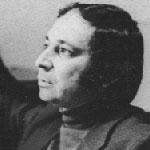
A vivid Oriental coloring, profound philosophical content, unrestrained ease, and a superb sense of form mark the style of the Azerbaijanian composer Akshin Alizadeh. In the opinion of connoisseurs, these features make his music an outstanding artistic phenomenon.
Akshin Alizadeh, one of today's most appreciated contemporary composers of Azerbaijanian music, was born in 1937. Graduated from the composition class of Jevdet Gajiev at the Baku Conservatoire in 1962, he is the winner of the Azerbaijan State Prize and a Prize of the Azerbaijan YCL.
His career had a spectacular start. A piano sonata, his debut as a student, won for him a first diploma at a national competition of young composers in 1962. He was awarded two more first diplomas: at the Tran Caucasian Spring Festival and, in 1965, for his First Symphony. Almost all of his major compositions have been accorded major awards.
Babek is undoubtedly one of the most important creations among eastern world's ballet repertoire and a great artistic achievement for its composer, Akshin Alizadeh. The plot of the ballet reminds of the uprising of Spartacus. It is about the hero Babek, a legendary herdsman and warrior, his tragic love and death. The ballet's very expressive music contains fiery men's dances, battle scenes, and deeply touching love duets, all that makes oriental music strongly appealing to European listeners.
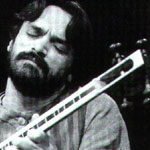
Born in Tehran, Iran in 1951, Hossein Alizadeh is considered one of Iran’s most respected and popular masters of Persian traditional music in contemporary times. After graduating from the Tehran Conservatory of Music, he continued his studies at the school of Music at Tehran University in 1975. There he received his Bachelor’s Degree in musical composition and performance.
During this period he also benefited from the mentorship of several renowned masters of Persian traditional music, such as Nour-Ali Boroumand, Ali-Akbar Shahnazi, Houshang Zarif, Mahmood Karimi, Yousef Foroutan, Said Hormozi, and Abdollah Davami. Having completed his studies, he obtained a position with the National Iranian Radio and Television Philharmonic Orchestra, where he later became conductor and solo artist.
His solo career has produced many performances in Iran as well as throughout Europe, the United States and Asia. His first and most noteworthy engagement in Europe was his performance in the orchestra of the world famous Maurice Bejart Ballet Company for the ballet of Golestan by Maurice Bejart.
In the early 1980’s he decided to pursue his formal education in music, and studied composition and musicology at the University of Berlin. Among his many other noteworthy musical achievements, he has established one of Iran’s most famous ensembles of traditional music, Aref, and taught at the University of Tehran as well as the Tehran Conservatory of Music.
Having a close collaboration with Les Ballets Persans, Hossein Alizadeh is one of the company’s main composer. His music has been a main source of inspiration for Nima Kiann’s choreography.

The Iranian Tar and Setar virtuoso, Majid Derakhshani, was born in 1956 in Semnan. He became seriously involved in music at the age of nineteen, when he attended the Evening Music Conservatory at Tehran. In 1976 he began to study music at the School of Fine Arts (University of Tehran). And during the following year he joined the Sheyda Ensemble. He was also a member of the Chavosh cultural Foundation since its creation.
He taught Tar and Setar at Chavosh, Roudaki, and the Technical Faculty of Tehran. In 1985, he founded the Nava ensemble and gave many concerts all over Europe. Together with other musicians, he also founded in 1991 the Nava Music Centre in Kohln, in Germany. His popular annual seminars of Persian music have been successfully arranged since a few years ago in Germany attracting enthusiast from all over the Europe.
He owes his achievements to Mohammad Reza Lotfi, his former Tar professor. Majid Derakhshani has gained world wide recognition for his exceptional playing as well as for his work as a composer and teacher at master classes. Presently he is residing in Germany and Austria.
Many of Derakhshani’s works have been produced by many radio and TV stations. Among his many publications are Ney-reez in 1988, Beekaraan in 1994, Dar Khial in Ghasedak in 1992, Morning Breez in 2000 and Essence of Love in 2000.

Kara Karaev was born in 1918 in Baku, Azerbaijan. He began his studies in music at the Baku Music School in 1926. After having graduated in 1935, he continued his studies in composition at the Baku Conservatory, and in 1938, composition and orchestration at the Moscow Conservatory. Between 1943 and 1946, Kara Karaev furthered his studies in composition under the instruction of Dmitri Shostakovich.
His achievements range over a wide spectrum including numerous symphonies, violin concertos, ballets, operas, oratorios, cantatas, film music, piano works, string quartets, and sonatas for violin and piano. It’s not difficult to detect in his work that he studied under Shostakovich. His music uses a creative synthesis of an eastern-influenced musical idiom, but clearly with western form and harmony. Among his master works, Symphony No. 3, and the ballet Seven Beauties are outstanding.
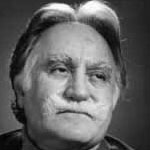
Mr. Mahmoud Farshchian, Iran's leading contemporary painter, was born in Isfahan in 1929. His father was a carpet merchant, and he was instrumental in instilling a love of the visual arts in his son.
From an early age, young Mahmoud decided to take up art as a career. For several years he studied with Masters Haji Mirza Aqa Emami and Isa Bahadori at the Isfahan school of Fine Arts.
After his graduation, he traveled abroad to study firsthand the works of the great masters of Western art. When he returned to Iran, he already carried in his head ideas for a new type of painting, a painting that was traditional and yet international.
Mahmoud Farshchian worked for a number of years in the Iranian Ministry of Culture and Arts and he was invited to teach at the School of Fine Arts at Tehran University. At the same time, he began to paint seriously, turning out works of great artistry and beauty, which soon won him many admirers, not only in Iran but also in other countries.
Master Farshchian has held 37 one-man exhibitions of his works so far, in Iran, in Europe and Asian countries, and in the United States, not counting the 62 group exhibitions in which he has also participated. And he has met with the enthusiastic response of the viewers wherever his works have gone on display.
Master Farshchian has developed his own style within the larger framework of Persian painting. While adhering to the fundamental traditions of the art, he has succeeded through the use of innovative techniques, to expand the capacity of Persian painting for artistic expression.
A typical Farshchian painting represents a pleasant mélange of traditionalism and innovation; while he continues the "Persian miniature" tradition with softly undulating lines, brilliant colors and delicate compositions, he breaks fresh ground with his choice of subject-matter, thus surpassing the old stereotypes.

Although he received his education in Law and Political Science in his native country of Iran, Nasser Ovissi’s destiny would soon prove to be one intimately intertwined with the arts instead. His love for the arts, and using art as a means of expression, started as early as at the age of five. Today his work can be found in many major private collections and museums throughout the world.
Mr. Ovissi has held exhibitions throughout Europe, the United States, Canada, the Middle East, South America and Japan. His work has been recognized with numerous international awards and a highly acclaimed reputation.
His work reflects great versatility as he uses and blends not only various mediums, but also embraces a tasteful blend and integration of art forms and cultural heritages. Characteristic hallmarks and motives which are recurring in his work, are the vibrant colors he uses, the 22 carat gold embossing and leafing, and more than anything else, the horse. UNICEF has repeatedly used one of his two-dimensional paintings of a horse, painted in 1964, on post cards sold for the benefit of its children’s fund.
Mr. Ovissi’s work is not limited to paintings, as he also expresses his art in ceramics and textiles. Several coffee-table books have also been published devoted to the beautiful and unique works of Nasser Ovissi.
Mr. Ovissi was invited to collaborate with Les Ballets Persans in 2002 when the company was established. All costumes of Sufi dances being produced for the repertoire of Les Ballets Persans (Divine Banquet 2002, The Beloved 2004, Rumi-Rumi 2007) are designed by Artistic Director Nima Kiann inspired by the drawings of Mr. Ovissi. Original calligraphies are created by Nima Kiann.
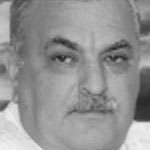
Tahir Tairov was born in 1948 in Baku, Azerbaijan. He graduated from the Department of Visual Arts at the Azerbaijan State Arts University in 1971.
While still being a student there, he was offered employment at the Azerbaijan State Opera and Ballet Theater to work as the stage and costume designer for the performance of Azerbaijan Suite by the composer Rauf Hajiyev, and choreographed by Rafiga Akhundova and Maksud Mamedov, whom he has worked closely with many times during his career. Azerbaijan Suite was later shown with great success at the International Dance Festival in Paris.
He has designed the visual settings for numerous great stage productions in Baku, Moscow, Tbilisi and Istanbul, such as Babek by Akhshin Alizadeh, Bolero by Maurice Ravel, Traviata by Giuseppe Verdi, Romeo and Juliet by Pyotor Tchaikovsky, Leyli and Majnoun and Don Quixote by Kara Karaev, to mention a few.
Tahir Tairov have designed and produced the costumes for Babek included in the World Premiere of Les Ballets Persans.

Born in Shiraz, the photographer Rahim Karimi developed a deep interest in photography as a child and after finishing his elementary studies moved to Tehran, where he studied photography at the Tehran College of Arts.
In Iran he worked with various photographic projects and during his engagement at the National Iranian Television in Tehran, he made some documentary films.
In 1978 Rahim Karimi migrated to Sweden. He studied film making at Stockholm University and at the Film College of Stockholm. He has made some documentary films in Sweden which have attracted much attention and has also been engaged as a media photographer. Both in Sweden and abroad he has arranged and participated in many solo and collective photo exhibitions. In 1999 Rahim Karimi started his own company, Photo Studio Alineh, in Stockholm. He is the winner of the annual award for photography in San Francisco, USA.
Rahim Karimi presented in May 2003 an exhibition of photography at the opening of Les Ballets Persans' new production La Femme with the same theme; the woman. He is the company's official photographer.

One of the most prominent international ballet dancers of the post Soviet Era, Emil Akmatov was born in Bishkek city in Kyrgyzstan. He recieved his academic education at Vaganova Dance Academy of Saint Petersburg between the years of 1983 and 1991.
He trained under the supervision of legendary masters V. Ivanov and Y. Umrihin. He was the principal soloist of L. Jacobson’s Academic Theater and Saint Petersburg Ballet from 1991 to 1994. Later he was engaged at the renown ballet company of Mariinsky Theater in Saint Petersburg (Kirov Ballet) betwen 1994 and 1996. In 1996 he worked in Germany. Between 2000 and 2008 Akmatov was the principal soloist of Maldybaev’s Kyrgyz State Academic Theatre of Opera and Ballet.
He has danced all leading roles in the classical ballet repertoire across the world such as in Don Quixot, Swan Lake, Gissel, Nutcracker, Le Corsaire, La Bayadere, Chopiniana, Fountain of Backchesaray, etc. He has also danced numerous choreographies of contemporary choreographers in the West including Petit, Balanchine and many otheres and the main neoclasical repertoire of Soviet and post-Soviet era like Spartacus, Ivan the Terible, etc.
After a long and successful dance career winning world's most important ballet competitions, Emil Akmatov was apointed as the Chief Choreographer and Director of National Ballet of Kyrgyzistan and National Ballet of Tajikistan. He has been the laureate of international competition of Malika Sabirova, in Dushanbe, Tajikistan and the laureate of international competition of ballet artists in Helsinki, Finland.
In 2012, he invited Artistic Director Nima Kiann to Tajikistan to become the company's Principal Guest Choreographer and to stage choreographies of Les Ballets Persans's repertoire.


